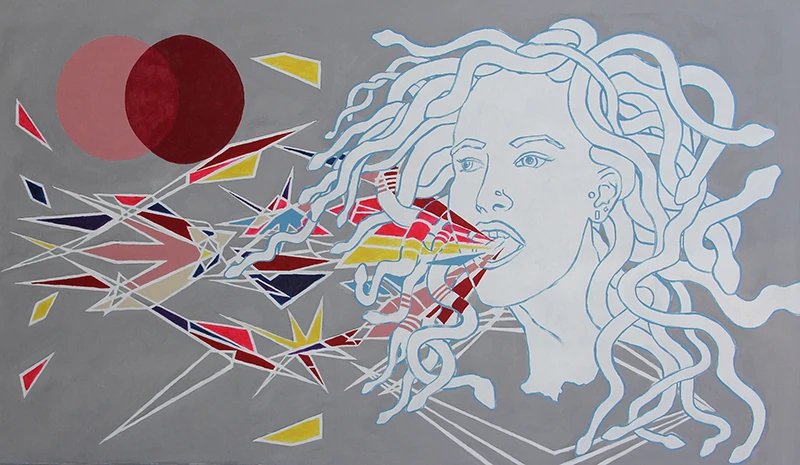Medusa: Horror or Hero?
Medusa's story speaks of injustice, resilience, immense power, and multiple dualities.
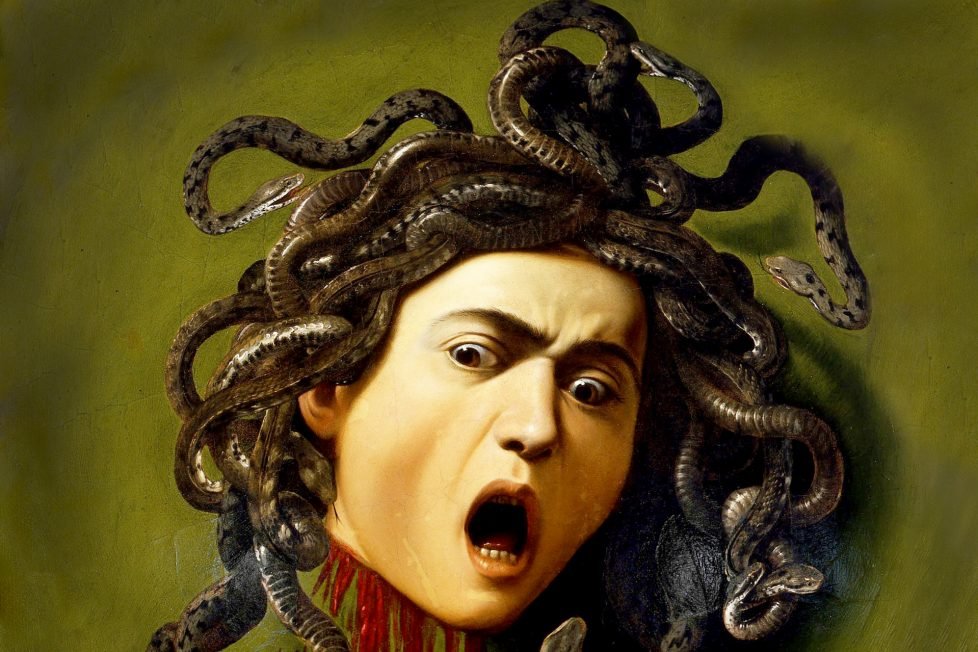
Medusa's story speaks of injustice, resilience, immense power, and multiple dualities.

Table of Contents
ToggleThe Medusa myth is one of the oldest and most captivating tales from Greek mythology. It paints an evocative image of a woman cursed with a head of serpents. A creature so terrifying that a mere glance into her eyes would render the beholder a lifeless statue. This is the figure that many of us are familiar with — a monstrous entity, a symbol of dread, and a cautionary tale of the consequences of crossing the gods.
Yet the character of Medusa is not as straightforward as this familiar depiction may suggest. In fact, there are two distinct versions of Medusa that emerge from Greek and Roman mythology. The first paints her as a being born a Gorgon, a dreadful serpent-like beast — the very name “Gorgon” in ancient Greek signifying “terrible” or “dreadful.” The second version, however, offers a far more tragic image — that of a beautiful priestess, wronged by the gods she faithfully served, and forced to endure a horrific transformation into a monster with a head full of snake hair.
As we explore Medusa’s tale, we will uncover the intricacies of these two versions, explore their symbolism, and examine how interpretations of her story have evolved from antiquity to the modern day. Was Medusa truly a monster, or rather a tragic heroine? Or perhaps, could she simultaneously embody both these roles?
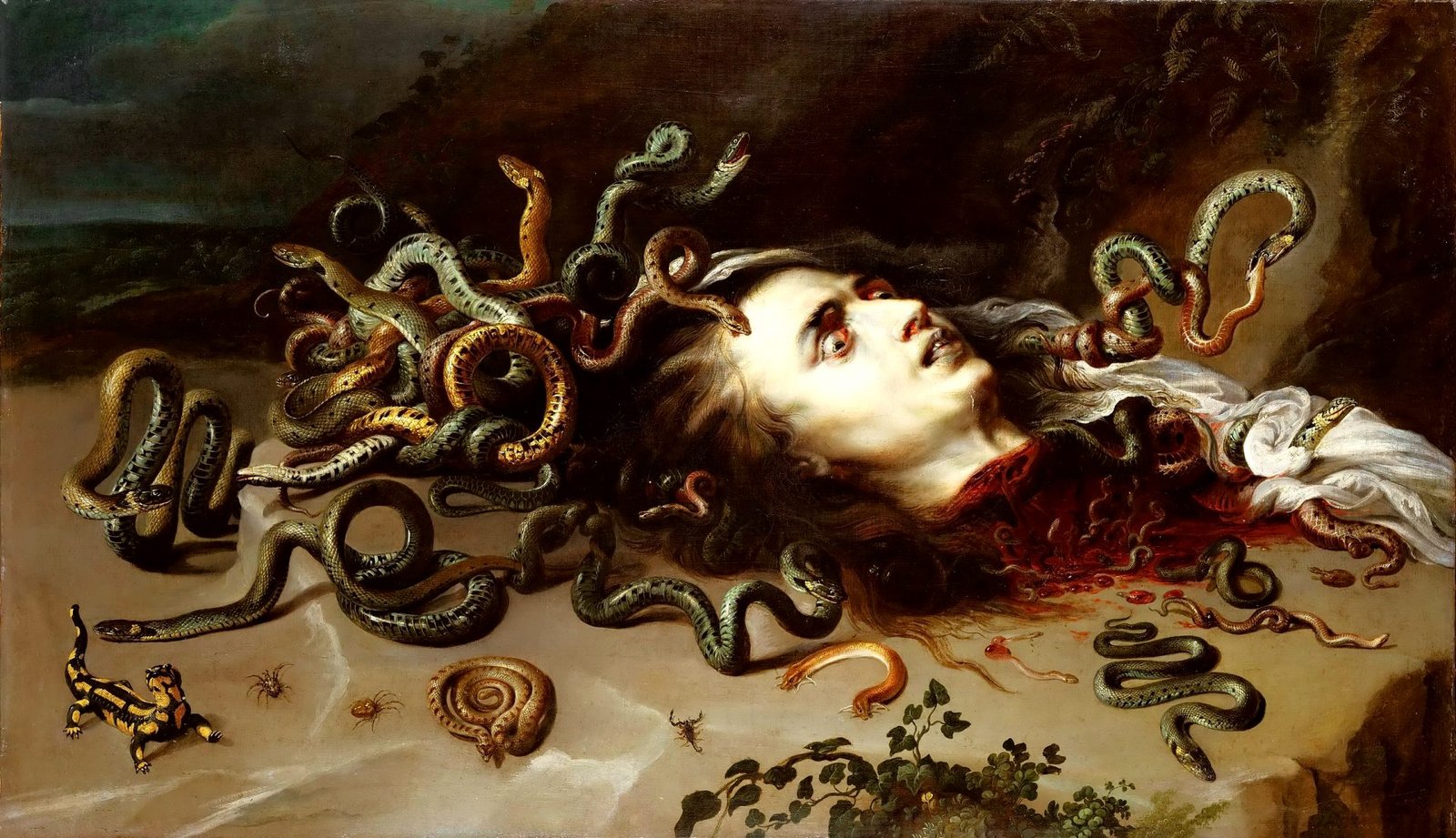
Our exploration of Medusa’s tale begins with the earliest literary reference to her in “Theogony,” a poem penned by the ancient Greek poet Hesiod around 700 BC. Hesiod introduces Medusa as one of the three Gorgon sisters, daughters of the sea gods Phorcys and Ceto. Among her sisters, Medusa is unique in her mortality, a trait that sets the stage for her fateful encounter with the hero Perseus. In Hesiod’s telling, Medusa is born a monstrous entity with the face of a woman, the body of a serpent, and wings adorning her back.
However, a drastically different account of Medusa’s origin emerges in “Metamorphoses,” a collection of transformational stories crafted by the Roman poet Ovid in 8 AD. According to Ovid, Medusa was initially a beautiful maiden who served as a priestess in the temple of Athena. Her life takes a tragic turn when she is raped by Poseidon within the sacred walls of Athena’s temple. Athena, in her wrath, perceives this act as a desecration of her temple and cruelly transforms Medusa’s beautiful locks into venomous snakes, rendering her face so terrifying that any who dare to gaze upon her are instantly turned to stone.
Regardless of her origin, both versions depict Medusa as a feared and reviled creature, residing in one of the farthest corners of the world, mostly isolated from human contact. Nevertheless, her story does not end in solitude. The narrative takes a grim turn with the arrival of Perseus, who is sent on a quest by King Polydectes to bring back Medusa’s head. With divine assistance from Athena and Hermes, who provide him with a sword and a reflective shield, Perseus manages to avoid Medusa’s deadly gaze and decapitates her.
Upon his victorious return, Perseus exposes King Polydectes to Medusa’s petrifying gaze as retribution for his mistreatment of Perseus’s mother, Danae. Following this act of vengeance, Perseus delivers Medusa’s head to Athena, who decorates her shield with its image as a symbol of her power.
In some variations of the myth, Medusa is pregnant with Poseidon’s children, Pegasus and Chrysaor, at the time of her beheading. They are born from her blood following her demise, marking her death with the birth of new life—a stark juxtaposition of destruction and creation that underpins her tale.
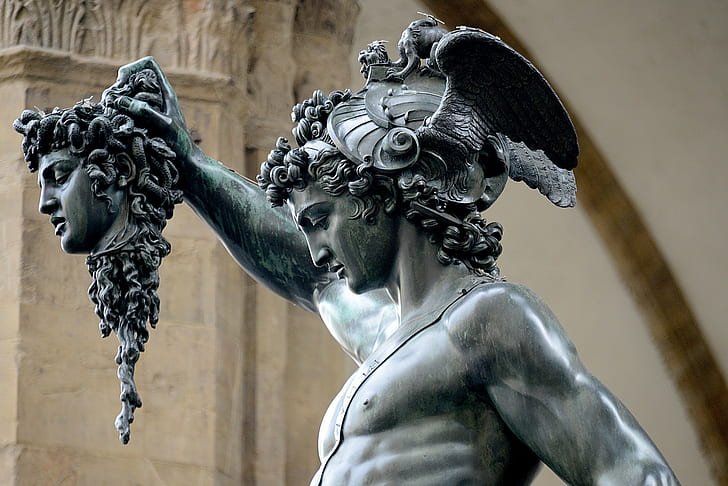
A striking aspect of Medusa’s tale is the rich duality of her symbolism, a dichotomy that spans themes of life and death, creation and destruction, violence and healing, and aggression and benevolence. This paradoxical nature is evident in several elements of her story.
Consider her serpentine hair. While these venomous creatures may be perceived as a symbol of danger, they also convey a sense of healing — an association prevalent in many cultures. This connection is evident in Greek mythology itself, where the Rod of Asclepius, adorned with two snakes, serves as a symbol of healing and medicine.
The birth of Medusa’s children, Pegasus and Chrysaor, from the blood of her decapitated head, is another example of this duality. The violent act of beheading yields life, painting a vivid picture of rebirth and regeneration. Some versions of Medusa’s tale go even further, suggesting that her blood also turned into sea corals as it fell into the ocean, offering yet another instance of life emerging from death.
Her petrifying gaze, too, embodies this duality. While her stare is undeniably a symbol of aggression — a stance mirrored in the animal kingdom, where direct eye contact can be interpreted as a threat — it also serves as a tool for justice and retribution. Perseus uses Medusa’s gaze to rescue his mother from King Polydectes, turning a symbol of terror into a beacon of hope.
These dualities present in the Medusa’s symbolism underscore the multi-faceted nature of her story. They reflect the contradictions inherent in her character — an unfortunate victim of divine injustice on one hand, and a terrifying creature on the other.
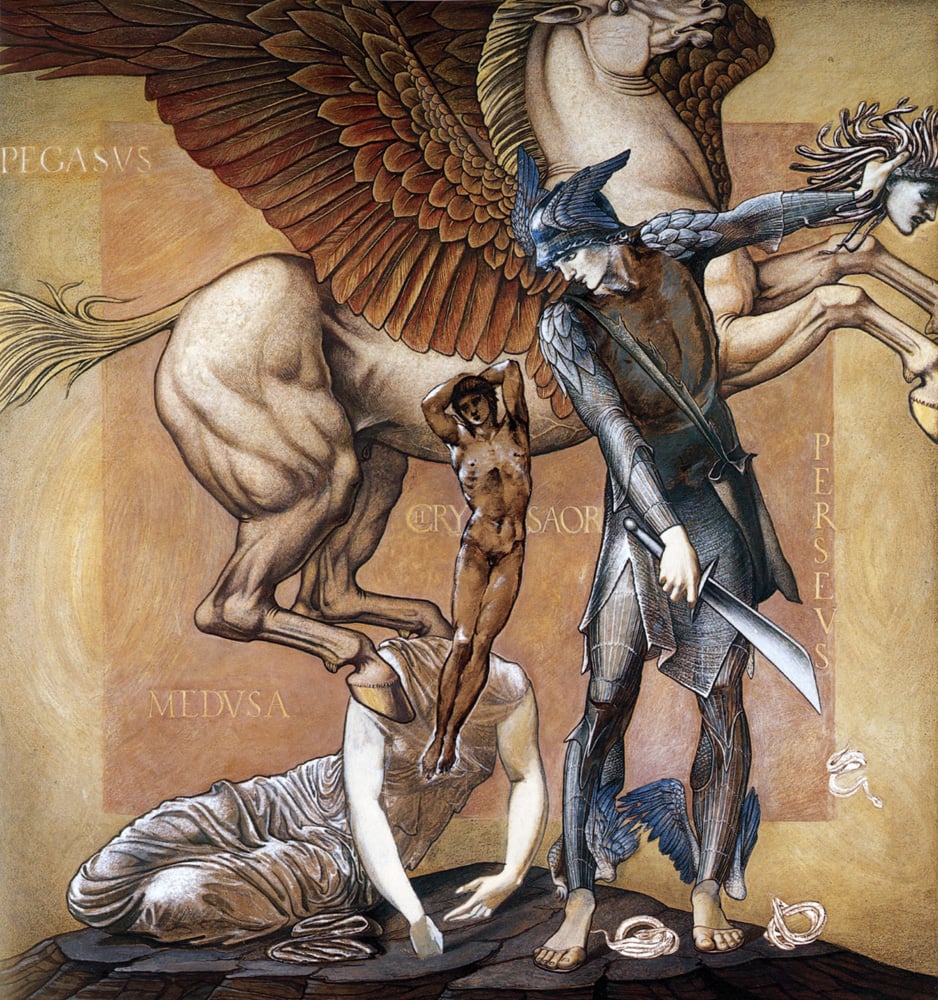
The portrayal of Medusa has undergone vast transformations over the centuries, creating another duality of monstrous and human aspects. During the archaic period of Greek art, around the 8th century BC, Medusa was depicted as a Gorgon — a horrifying monster, an enemy of humankind, a figure invoked to incite fear. Her head, known as the Gorgoneion, was a staple in ancient Greek art and architecture, used as a symbol to ward off evil spirits. It adorned temples, statues, and pottery, and was characterized by a large round face, a beard, fangs or tusks, wings, and often an open mouth with a protruding tongue.
As we move into the classical period, post-5th century BC, depictions of Medusa began to evolve. She retained her status as a Gorgon and her serpentine attributes, but her face reflected more human-like and feminine features. Her monstrous form started to coalesce with a more human one.
This transformation continued into the era of the Roman Empire around 100 AD, where Medusa’s image became even more humanized and associated with heroic depiction. Her hair transformed from a nest of snakes to a cascade of wild curls, and she began to adopt traits derived from representations of Alexander the Great and Hellenistic kings, such as the wind-blown effect in her hair and a heroically turned head.
The evolution of Medusa’s image from the dreaded Gorgon of Greek antiquity to the humanized figure of the Roman era mirrors significant societal changes. During the time when the Medusa myth was first recorded, Athenian women were considered to be of lesser social standing than male slaves. However, by the time of the Roman republic, women enjoyed a far wider range of rights — they could own land, run businesses, free slaves, make wills, inherit wealth, and get a paid job. The increasing emphasis on Medusa’s beauty and her subsequent humanization in her depictions serve as a reflection of the evolving societal norms where women began to occupy more diverse roles.
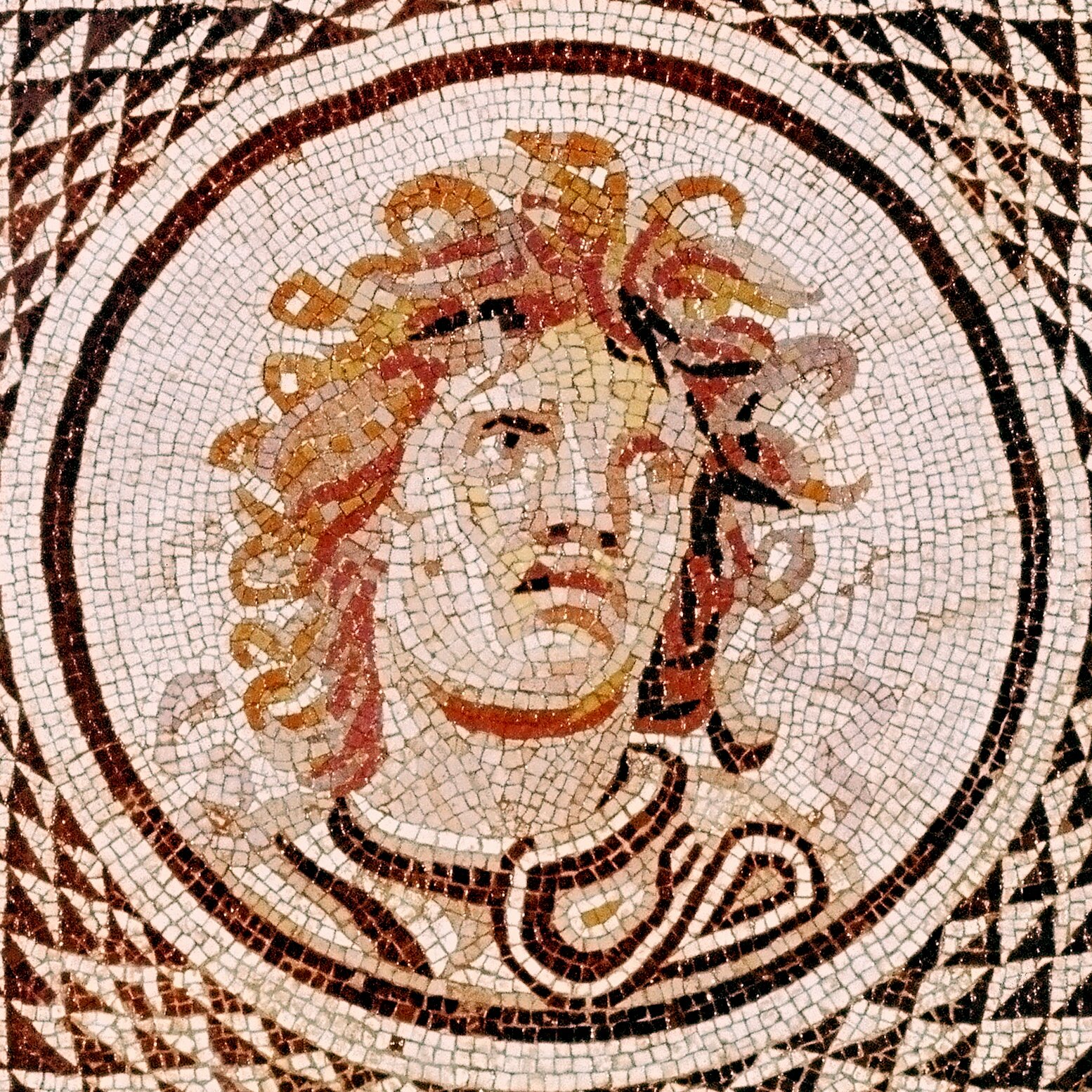
As the lens through which we view Medusa shifts from antiquity to the Renaissance and beyond, her association with rebellion, resistance, and breaking with norms becomes apparent.
In 1597, the Italian painter Caravaggio breathed life into a rendition of Medusa that was steeped in violent realism and an air of mystique. His interpretation rebelled against the idealized styles of art of that period, further cementing Medusa’s association with nonconformity.
This trend continued into the 18th century, where Medusa became an emblem of resistance during the French Revolution. The Jacobins, staunch advocates for the removal of the monarchy, saw her as a victim of tyranny and oppression. To them, she represented the power and resilience of those victimized by the monarchy, symbolized by Athena.
However, those opposing the revolution had a different perspective. Danish philosopher N. F. S. Grundtvig compared Robespierre, the leader of the Jacobin revolutionaries and perpetrator of the Reign of Terror, to Athena. He argued that Robespierre used Medusa’s head, much like Athena did, as a tool to “freeze” his enemies in time with the guillotine, viewing the revolutionary leader and his rebels as an affront against the divine.
By the 19th century, German philosopher and influential nihilist thinker Friedrich Nietzsche, in a rebellion against traditional religious beliefs, declared that “God is dead.” Nietzsche also cultivated an attitude towards life known as amor fati, or “love thy fate,” suggesting that one can derive satisfaction from life even in the absence of a god by embracing all experiences, including hardships. This philosophy, which promotes resilience and acceptance, is embodied by Medusa, who faced her fate with unyielding strength and determination.
In 1975, French feminist writer Hélène Cixous penned the essay “The Laugh of the Medusa.” Cixous views Medusa not as a defeated monster but as a defiant figure who laughs in the face of adversity — a symbol of resilience and joy, that embodies the Nietzchean philosophy of amor fati. To Cixous, Medusa is also a symbol of women’s liberation, opposing patriarchal oppression and standing as a beacon of female power and resistance.
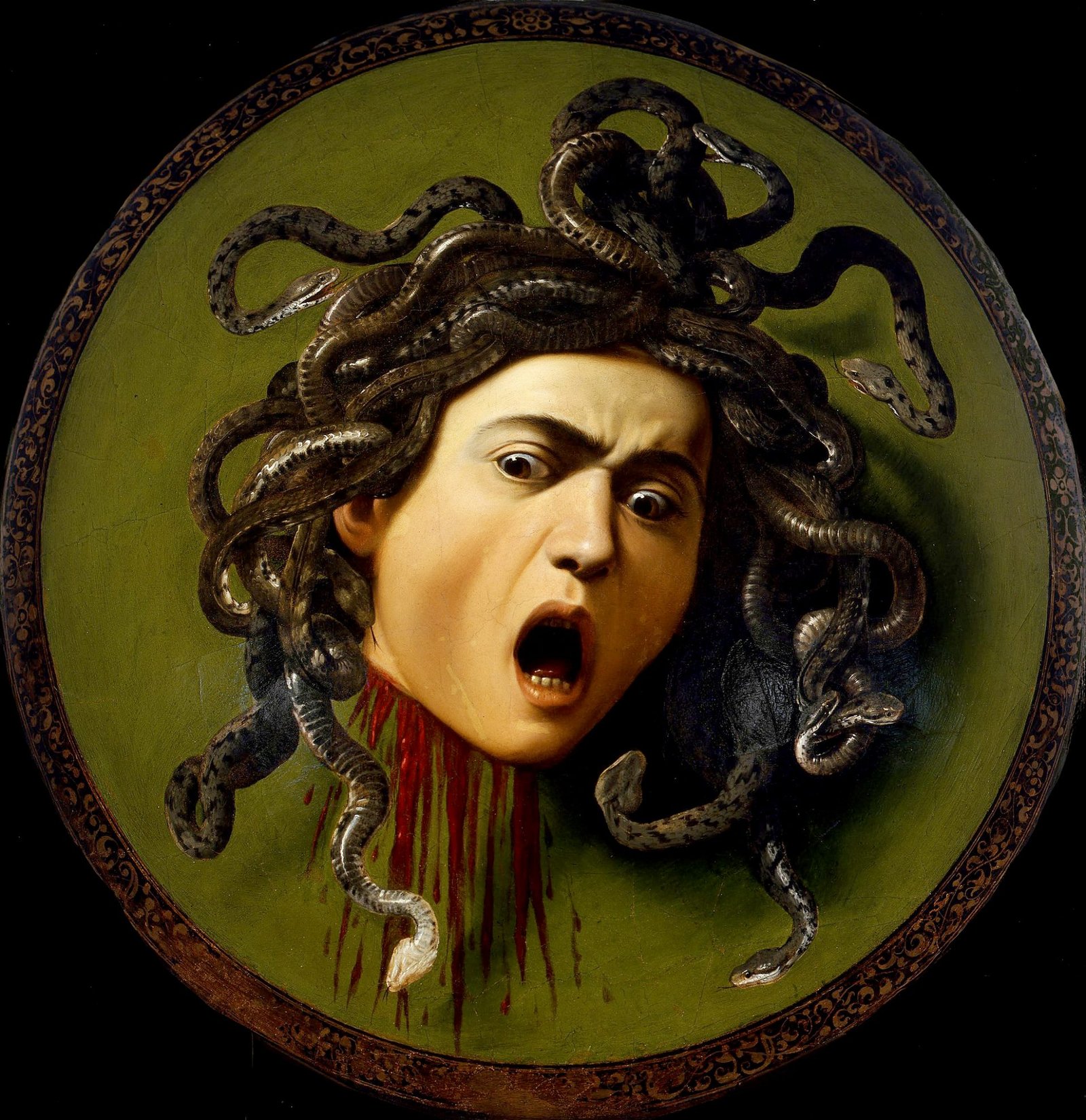
From its inception in ancient Greek mythology to its modern interpretations, the depiction of Medusa transforms from a sinister serpent, an emblem of dread and horror, into a symbol of strength and resilience.
Medusa represents an intricate duality, oscillating between the roles of a monstrous entity and a tragic hero, a victim and a resilient icon. Each version of her story offers a different facet of her character, reflecting the unique perspectives and societal norms of the time.
From the Gorgon’s head that wards off evil spirits to the defiant laugh of a feminist icon, the story of Medusa is one of fear, tragedy, resilience, and power.
